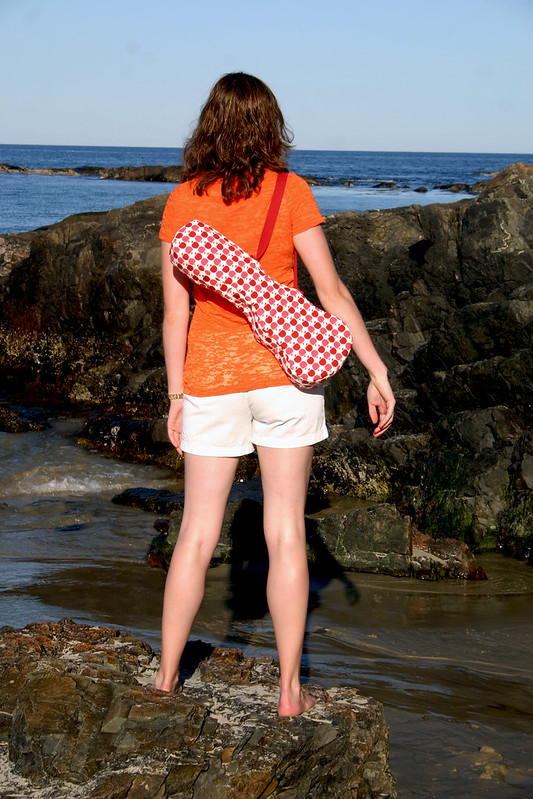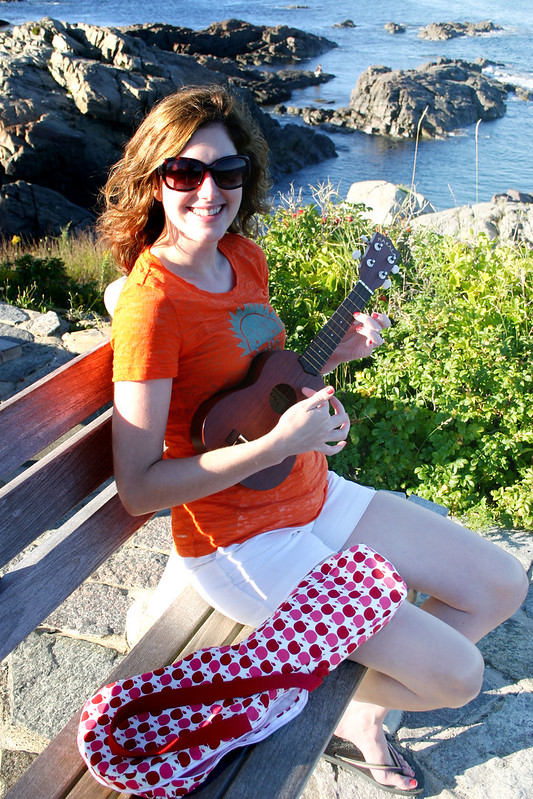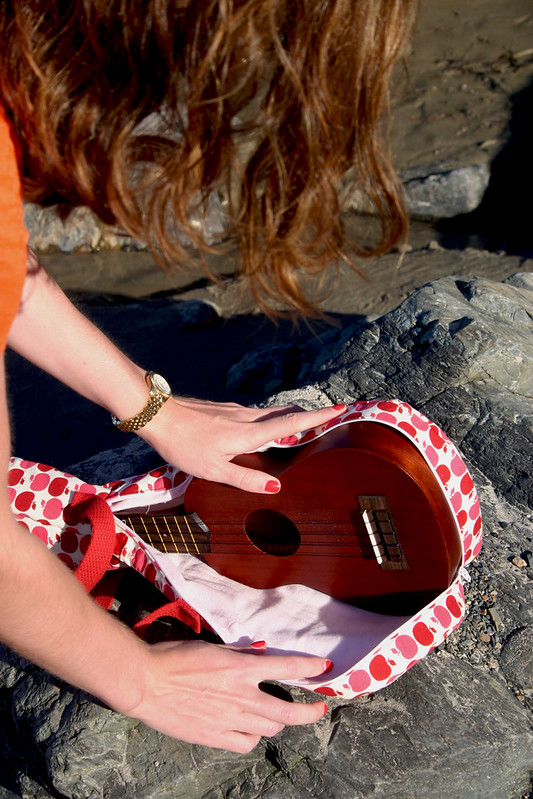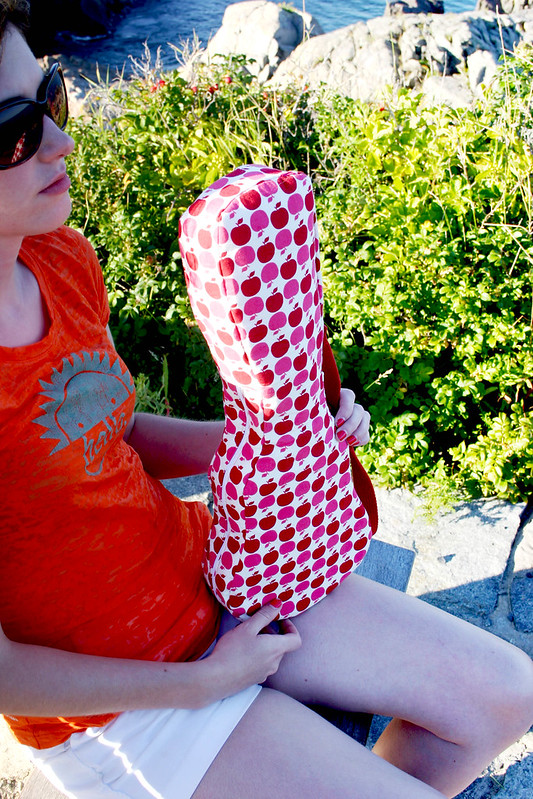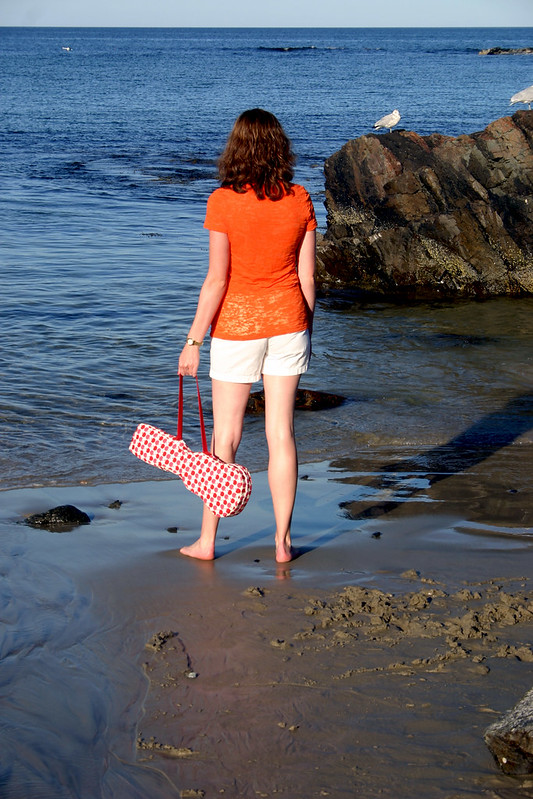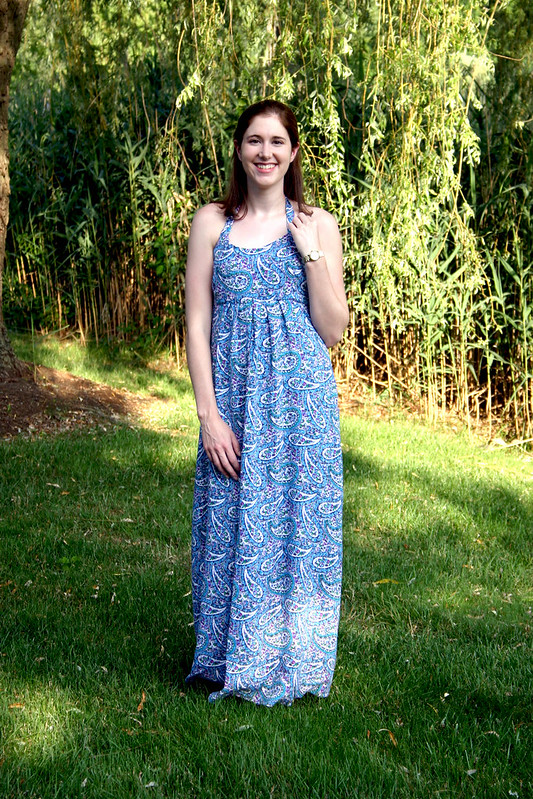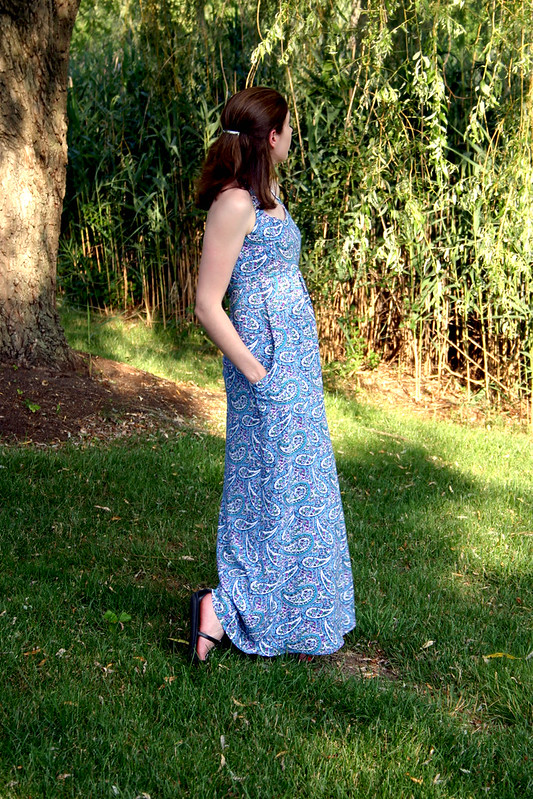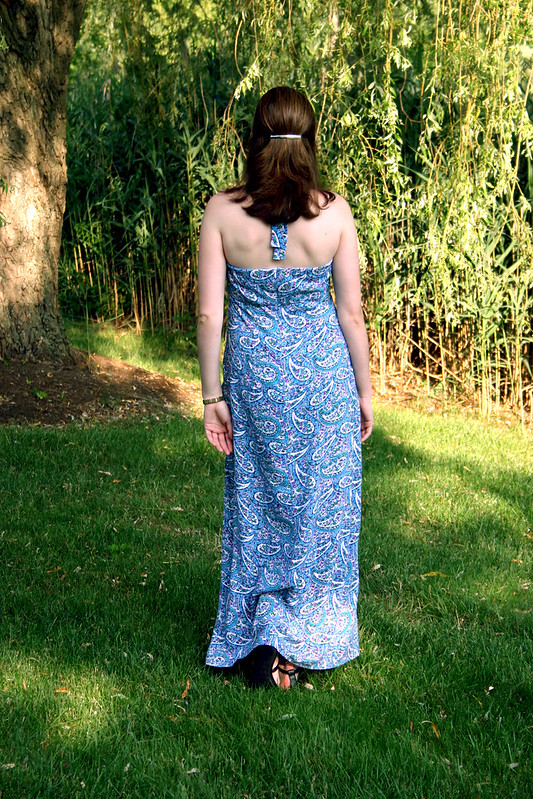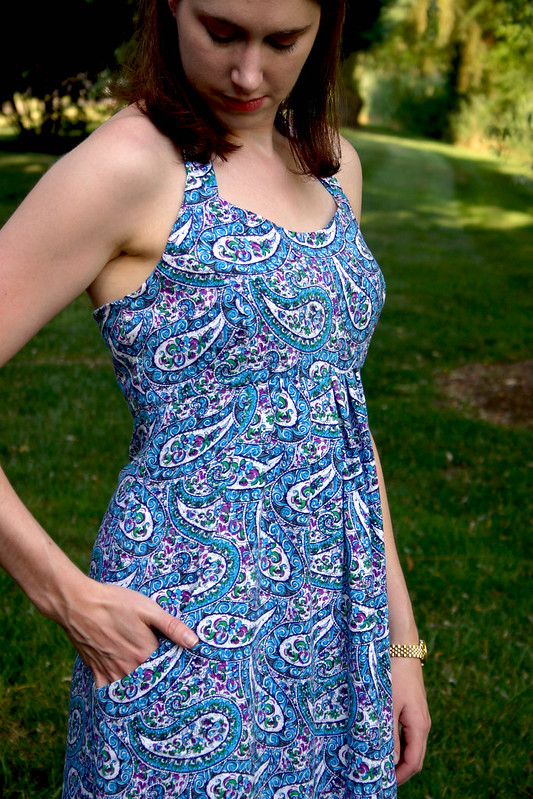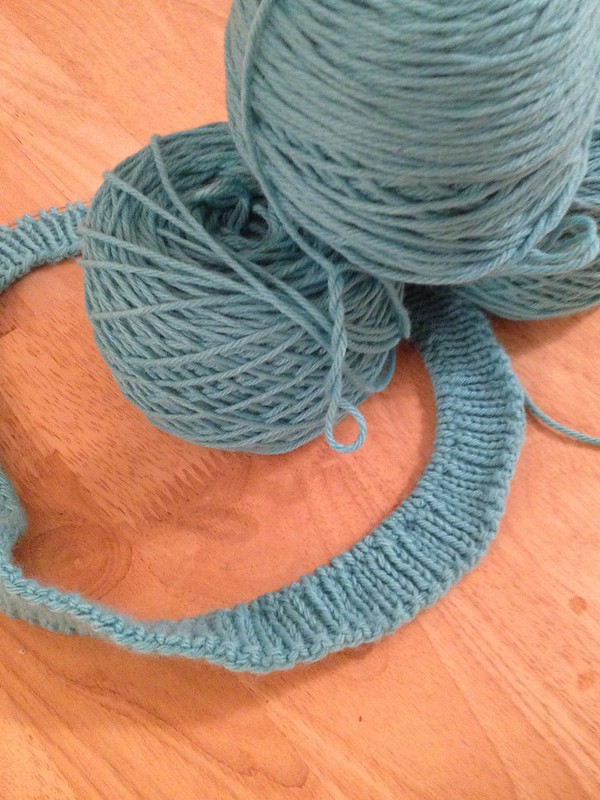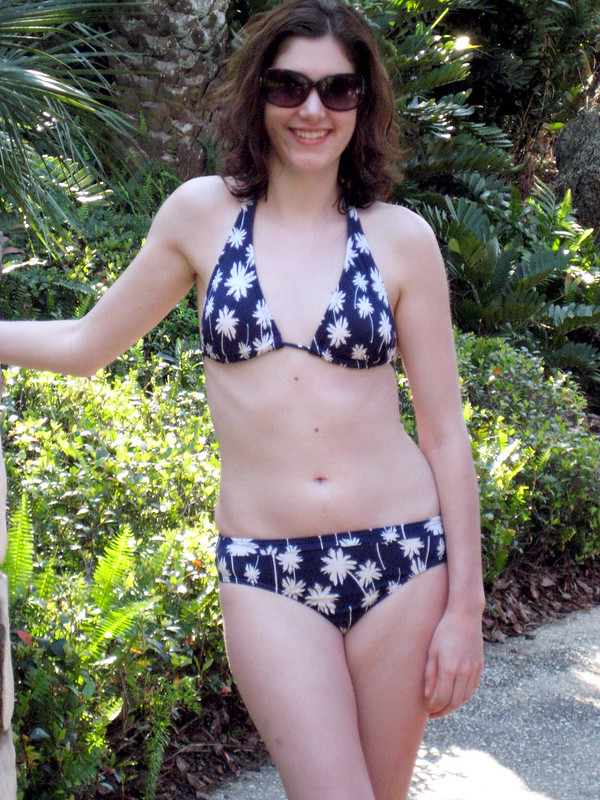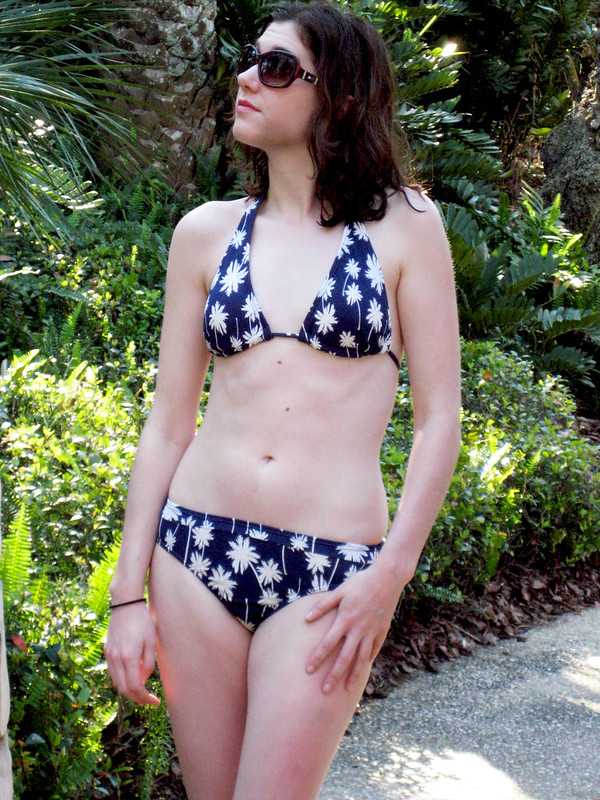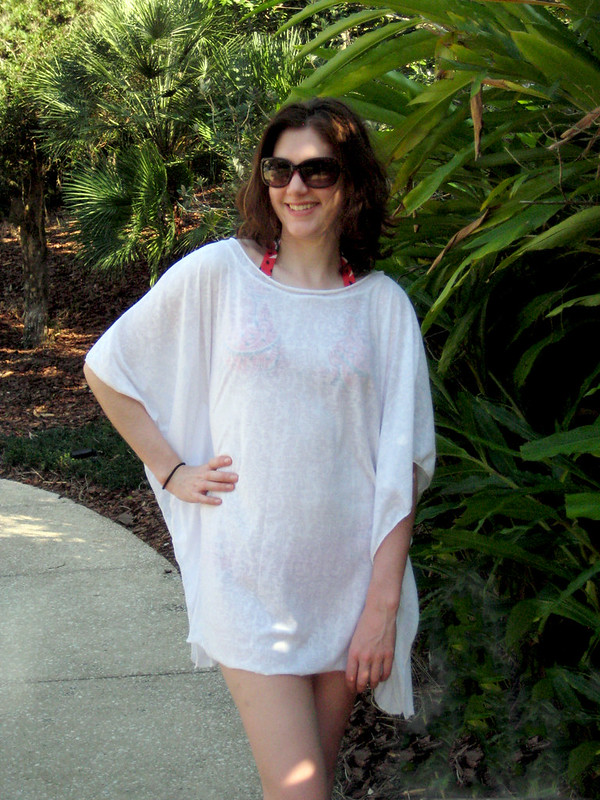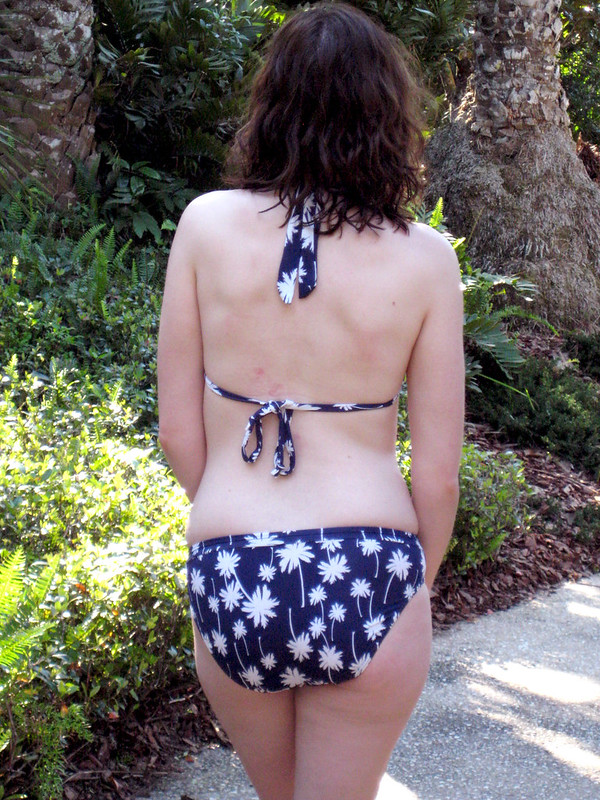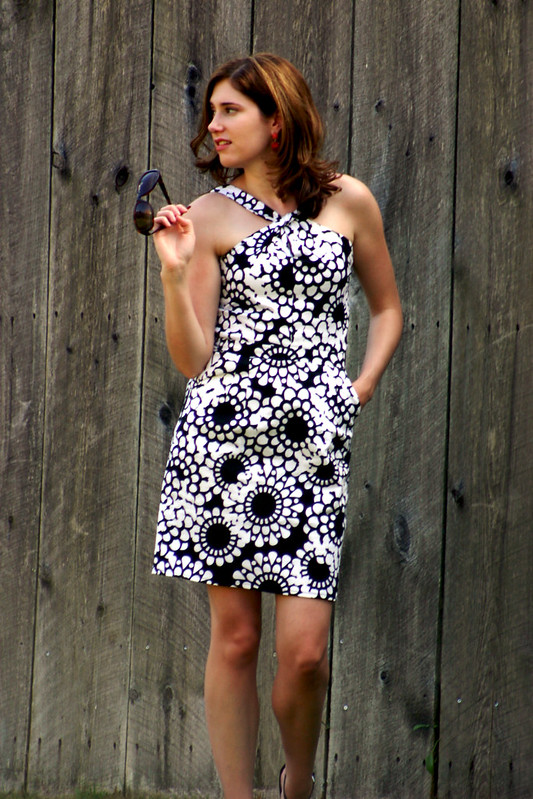
Pattern: bodice – Lonsdale by Sewaholic
skirt – By Hand London Charlotte Skirt
Fabric: stretch cotton sateen from Metro Textile
Size: bodice – 4; skirt – 8
Earrings: Charming Charlie
Sandals: Nine West
Sunnies: Tommy Hilfiger
That Sarai, she’s got some great ideas – did you see her white Lonsdale dress a few weeks ago? Pure fabulousness, especially in all white for summer. Sue gave me this pattern last year during the spring sewing swap and I’ve been saving it for just the right fabric; I thought my paisley rayon in my stash would be perfect, but realized just before cutting into it that the paisleys were directional. Darn it! But what I loved about Sarai’s version is how she changed the dress from a flowy skirted number to a form-fitting silhouette. When I considered that design change, I discovered I already had the perfect fabric all along.
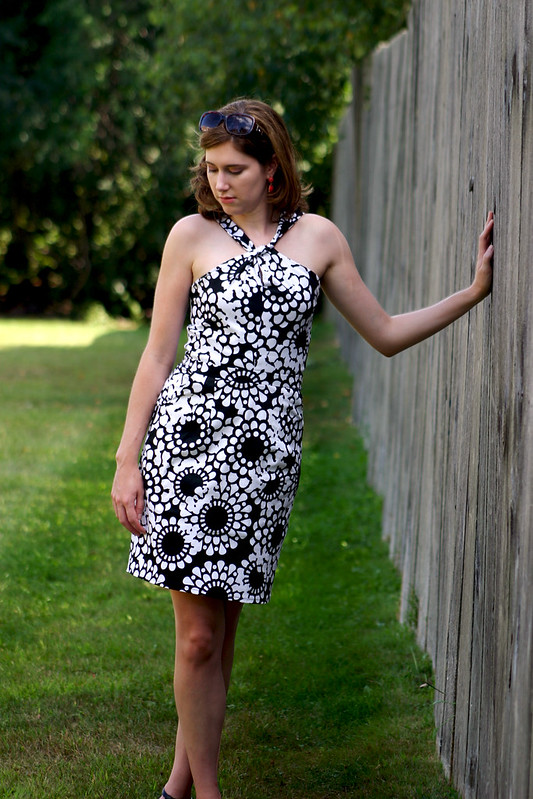
I make a point of going into Metro Textile with a focused shopping list of what I need to find, but always walk out with something unexpected that I’m not sure what I’ll end up using it for…such is the case with this fabric from my last shopping trip. “Buy three yards, make a dress,” Kashi said. Those three yards were exactly what I needed to make this dress, what luck! I love the body and weight of this cotton sateen, and with the little bit of stretch, it doesn’t wrinkle at all and makes the skirt easy to sit and move in.
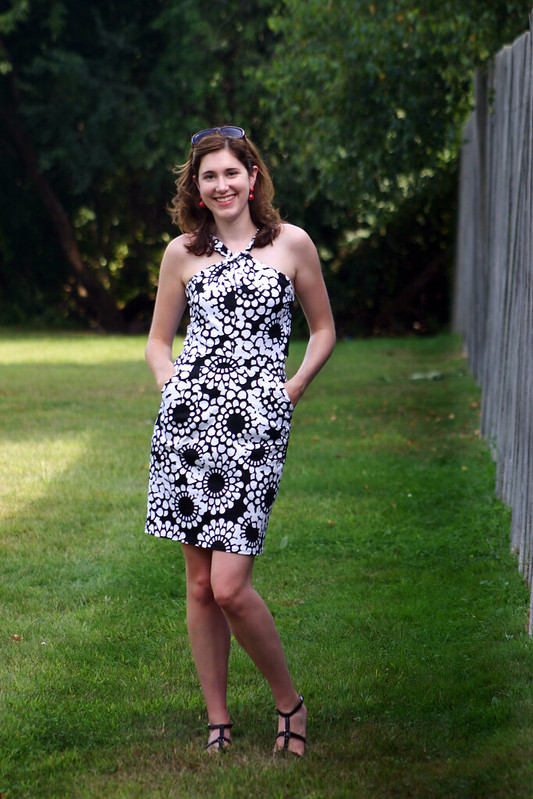
So how did I go about making this pattern hack? Well, I didn’t have the confidence or pattern drafting abilities that Sarai has to alter the original skirt pattern for the Lonsdale dress – it was on the bias, a-line…didn’t want to touch that puppy and risk screwing up. Instead, I turned to my trusty and beloved Charlotte skirt pattern. The waist of the Charlotte skirt measured the same as the Lonsdale bodice in my size, so it was a no-brainer to go that route instead of drafting my own pencil skirt. What I did end up drafting was the curved pocket, to emulate the pockets on the original Lonsdale skirt…I do love me some pockets in my skirts and dresses.
The pocket drafting was pretty simple: I copied the curve of the original Lonsdale pocket onto my Charlotte skirt pattern (traced, of course) to get a general shape, and tweaked it a little to fit the shape of the sides of the skirt. I also took the original pocket pattern piece of the Lonsdale dress, altered the curve, and shrank it down slightly since I was worried that the original pockets would be too big for a tight fitting skirt. Easy-peasy change, and now I can make my future Charlotte skirts with pockets!
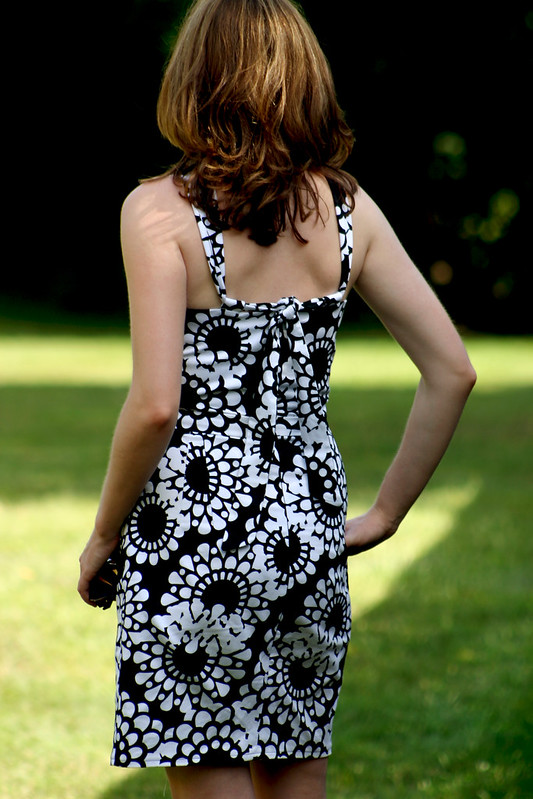
With the fabric being a bit stiff, it’s easier just to knot the ties instead of tie them into a bow. I think the straps are my favorite detail, they make the dress so different than other patterns out there and RTW dresses. This is why sewing is awesome!!
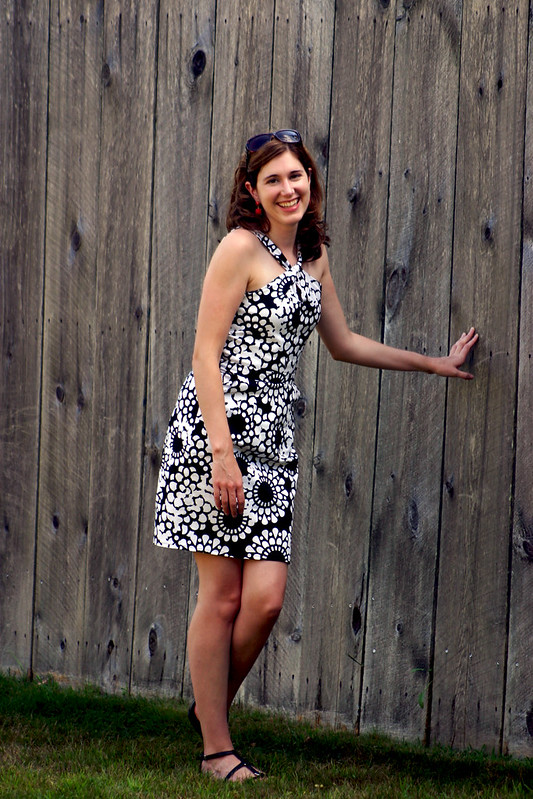
Ok, I had to include this shot – Chris took pictures, unbeknownst to me, of me peeking through a crack in the fence at the horses next door and I couldn’t stop laughing!
Well, that’s my last garment of the summer. I finished this a few week’s ago to wear to a party with Chris and his family, and now I’m tucking it away until our winter vacation somewhere warm in January (I hope!!). So far for 2014, this dress just may be my favorite garment of the year…but I have a long list of garments to make for the balance of the year, so who knows!!
